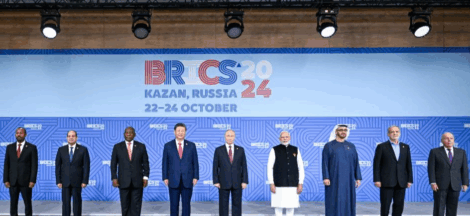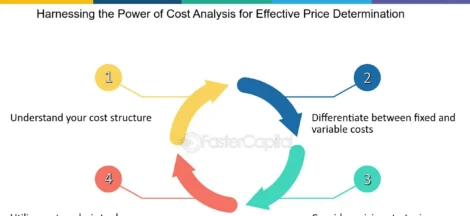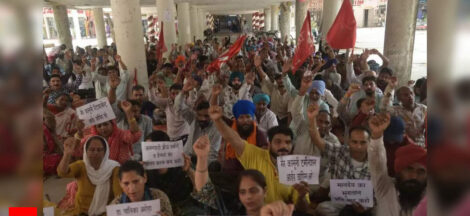By Anjan Roy
In the background of an economic calamity like the liquidation of the market valuation of Adani Group, the union budget presented by Nirmala Sitharaman on February 1 is almost like the “kalpabhriksha” of Indian mythology. Whatever you ask for from the mythological tree, your wish is fulfilled.
She has given away and given away. She has given some tax concessions to the middle classes, agri credit limit has been raised to Rs. 20 lakh core, higher agri investment scheme, huge jump in infrastructure investment, including the railways, happy ending for industries with reductions in customs duties for a range of inputs.
The finance minister has conceded the long-standing demand of the older people for a hike in the Senior Citizen’s Scheme investment. The hike in farm credit limits would be a major move. The list goes on.
The giveaways are easily explained by the fact that the Lok Sabha election is due next year and the budget is creating a feel-good factor overall.
At the same time, the finance minister promises to do a tight rope walk towards reduction of fiscal deficit. The finance minister promises to bring it down to 5.9%.
The secret lies in her growth assumption. That is the economy would be growing at certain pace which should yield the higher revenues. The glimmer of hope is that the indirect taxes collection —namely, GST— is rising with a sing along mode. If that continues and the revenues rise, the financial minister’s give-aways could be afforded along with a strict path to fiscal consolidation.
Now, what is the growth trigger. As such, the current situation is not the best of times. The global economy is sliding and facing the prospects of a recession. It might not present a very easy market for India’s exports.
The Indian economy survives on its massive internal market, dominated by the Indian middle classes. The finance minister is offering the hikes in income tax exemption which should leave more money in the hands of the middle class consumers. So the effective demand in the economy should rise and act as a trigger for growth.
But, then what the government gives away with one hand, it takes it back by the other.
The rising GST collections actually demonstrate this. Every rupee collected from GST is extraction from the pockets of ordinary people. The GST capture is spreading ever wider and the rates are none too negligible. As someone said, while going for some food in the evening with your family, it feels as if the centre and the state governments are also sitting at the table.
Income tax has become increasing smaller part of the revenue kitty. Corporation tax and customs duties are also been lowered a bit here and there.
The real point is that the giveaways are rather small in the aggregate. But these are big shows. The exemptions and concessions in taxes to the middle classes are a tiny Rs 38,000 crore, which is a very small part of the overall revenue collection.
The fact is that this seems to be the first budget after the exit of the pandemic. So the situation is ripe for being optimistic. Last few years, we all have been living in suspended animation. So there is an assumption that there will be more spending.
Another trigger of growth is the huge jump in proposed investment in infrastructure. We have of course been talking about infrastructure investment most of the time last few years. The sheer such large investment in the railways could have ripple effect down the line.
Large scale investment in building social capital could set off two kinds of multiplier effect. First, these create the enabling facilities for economic activities. And secondly, the infrastructure projects create incomes for those large number of people employed.
But there are limits to what an annual budget could do and not do. It looks as though there is excessive expectation about the annual budgets. The budget provisions and expenditure proposals could do some changes and set off reactions.
The finance minister’s budget speech has become a read out of project proposals and announcement of outlays. For the whole of the part one of the speech, it is only rattling off the list of projects for which the government should spend money during the year. The finance minister might just as well pace the list of projects and outlays, than read out and bore the members for the greater part of an hour.
Then the minster is announcing the new customs duties or other taxes. This used to be the kind of budgets we used to get decades back when AC excise would rise or fall, cigarette tax rate hiked, cement excise duty lowered and so one. But then, that part of budget, spelling out the excise rates for variety of articles have been rendered redundant with the GST structure.
The budget should in fact now spell out another structure for direct taxes in due course. We need not be as keyed up about the direct tax rates every year as we do now.
Budgets of far larger economies are actually of this kind. Whole of America does not go into a vortex of debates and wild allegations and counter allegations about budget making every year. In fact, there is little air of secrecy about the budget proposals. These proposals are know in advance and debated.
The budget should rather lay out a philosophy about how the government would approach the entire question of economic management. It should be a moving statement of next five years for the economy.
This begs the broader question of government’s role in the economy. The government role should be viewed more like a doctor. A doctor should help the patient, however, the basic thing is that he should not harm. That is, the government should not do something that harms the economy in a haste.
The aggregate of the activities of the entire population as also the private sector, determines what will happen to the economy.
The budget should give that free play to the animal spirit of the private sector and players. This would take the economy to the next higher stage. (IPA Service)



